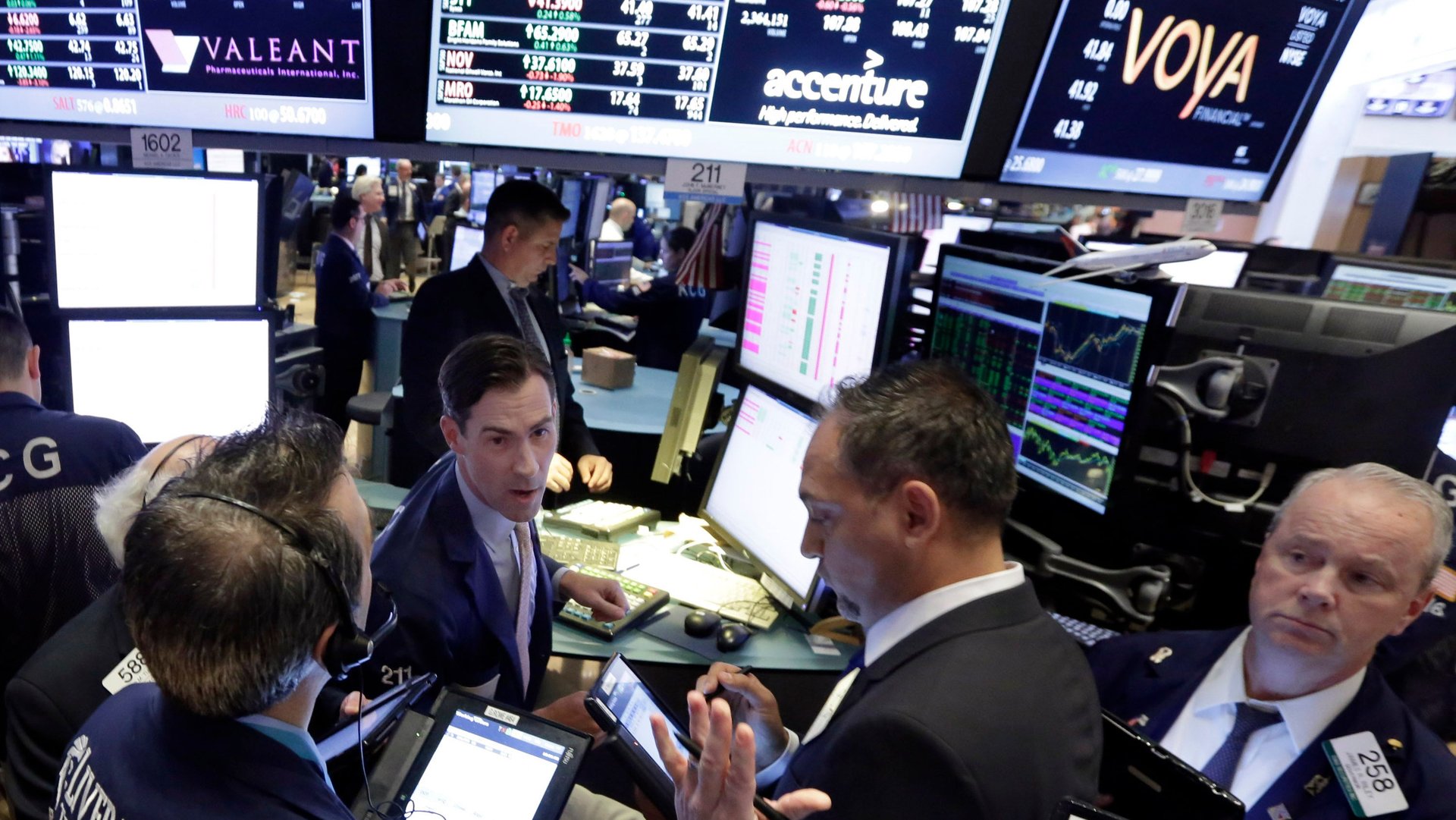Trading fake stocks taught me that tech investors are way too gullible
Do optimists make for bad investors? Consider the unlucky shareholders in the biotech company Theranos, who pushed the company’s value to $9 billion before it came under fire for reportedly faulty blood-testing technology. Now big contracts from potential customers like Walgreens are on hold, and the company needs to resubmit data to receive approval from the US Food and Drug Administration.


Do optimists make for bad investors? Consider the unlucky shareholders in the biotech company Theranos, who pushed the company’s value to $9 billion before it came under fire for reportedly faulty blood-testing technology. Now big contracts from potential customers like Walgreens are on hold, and the company needs to resubmit data to receive approval from the US Food and Drug Administration.
After five days of trading on the Guggenheim’s new Åzone Futures Market, I now understand how easy it is for investors to fall prey to unbridled enthusiasm. Artificial intelligence, 3-D printing and other hot technological innovations are understandably enticing for shareholders on the lookout for the next big thing. The problem is that these technologies are very difficult for most laypeople to understand, so they’re forced to rely on a lot of industry and media chatter–which tends to be overwhelmingly positive.
The Åzone Futures Market is a fictional marketplace that lets online investors bet fake money on future technologies. Many of the futures in the Åzone market center on biological innovation, which also happens to be a hot investment area in the venture capital world. Once investors deplete their initial 10,000 cåin (a fake currency pronounced like “coin”), buying or selling a share requires them to share “Hot Tips”–breaking information about technological news that could influence stocks.
When investors log onto the trading market’s home page, they see a montage of Hot Tips with startling real-life headlines like “Miniature Human Brains Grown in Petri Dish” and “CRISPR Gene Editing to Be Tested on People by 2017.” The goal of the marketplace is to get participants talking about how the innovations that are happening now are turning technological fantasies into reality.
“Rather than bringing an Oculus Rift VR headset into the museum and saying, ‘This is what [technology] looks like, and you can play with it,’ it was more about, ‘How can we create a platform or, more, an infrastructure for people to discuss the effects of those technologies?’” Troy Conrad Therrien, curator of architecture and digital initiatives at the Guggenheim Museum in New York, tells Quartz.
But as I discovered firsthand, the secondary effect of all that information-sharing is to show how optimism can handicap investing. All those Hot Tips, along with the Åzone market’s information about which futures are growing the fastest and have the most value, can get an investor really excited about a specific stock–only to have that enthusiasm backfire when it comes time to sell. Personally, I found it difficult to let go of investments I’d learned a lot about, even when selling was a reasonable decision. And I frequently struggled to find a negative Hot Tip to support a sale, as it was far easier to find enthusiastic information on the internet than pessimistic data.
By my fourth day of trading, my techno-optimism reached a high point. I’d settled into a rhythm of skimming each day’s news for potential Hot Tips. I had just read that advances in artificial intelligence were making data stashes—databases of customer information–financially valuable. That made me want to buy shares in Data Accreditation, a future in which people will trade their personal data for goods and services. But I couldn’t rationalize getting rid of another stock. By refusing to part with any of my investments, I missed out on buying more lucrative futures, and my portfolio’s value shrunk.
These results are a little ironic, given that the Åzone market was designed to work more efficiently than real-life markets. Because the Federal Reserve artificially spurs economic activity with quantitative easing, investors may ignore negative signs in a failing industry. On the other hand, trades on the Åzone market are tied to concrete news, which makes the reasons for a given trade apparent to everyone. But while the reasons for trades were clear to me, all the news I read was too good.
Trading on the Åzone market taught me that smart investors should consider the reality that some technologies might not work out as promised. Investors in real markets may not be as Panglossian as me, but it wouldn’t hurt them to place more weight on a technology’s risks when deciding to invest–no matter how breathless the latest pitch presentations and headlines may be.